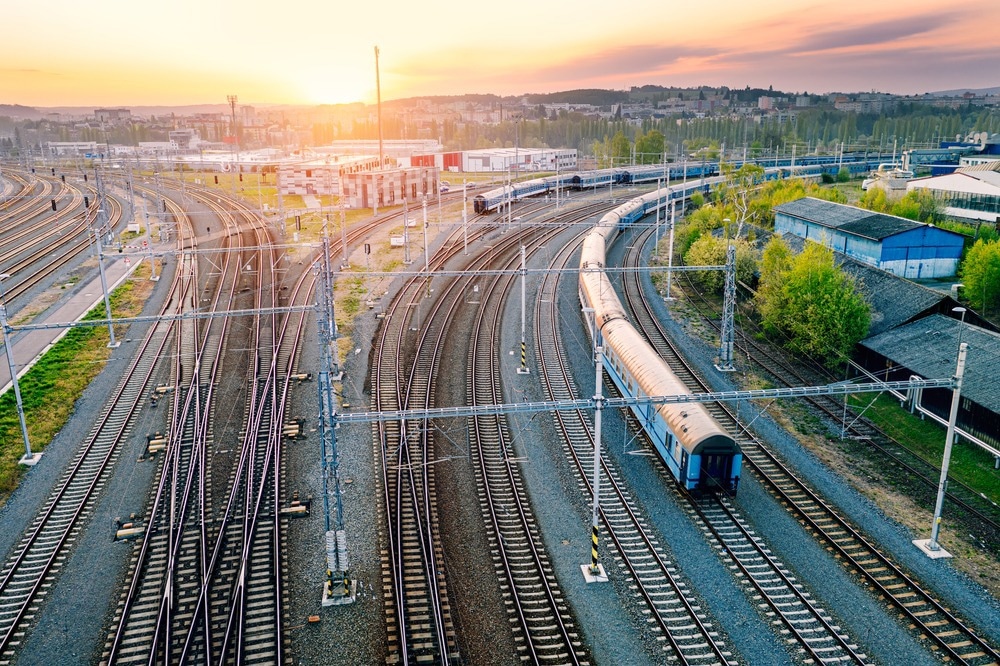Transportation as a sector accounts for around 20% of all carbon dioxide emissions globally, with passenger and freight travel emitting roughly 41 kg of carbon dioxide per km traveled. Here, we will explore how railway decarbonization can be achieved, what the benefits of this are, what challenges must be overcome to ensure the success of decarbonization plans, and what the future might look like for railway decarbonization.

Image Credit: David Jancik/Shutterstock.com
As the world works toward ambitious emissions goals to address climate change, global governments are recognizing that they must initiate decarbonization strategies within all its sectors, particularly those that are heavy emitters. The UK, for example, promises to deliver a net-zero rail network by 2050 and the US aims to remove all diesel-only trains from the network by 2040.
What is Railway Decarbonization and How is it Achieved?
There are several routes to decarbonizing railways. Different networks have varied requirements, meaning that different routes to decarbonization are suitable for scenarios.
Battery power is one route to decarbonizing railways. As battery technology has developed in recent years, performance has increased and costs have dropped. This has resulted in battery power becoming an attractive alternative to fossil-fueled transportation.
Hydrogen is another route to railways decarbonization that has also become an increasingly viable option as an alternative fuel source in recent years. There are many ways to generate hydrogen, which burns cleanly, without releasing greenhouse gases.
The Coradia iLint™ was the first hydrogen-powered passenger train to enter commercial service. In 2018, the zero-emissions train began running in Germany. In the years following, Alstom, the creator of the Coradia iLint™ has received orders from Italy, France, and Austria.
Some strategies involve combining multiple alternative power sources to take advantage of various benefits. Researchers at the University of Birmingham have recently been working on a project that aims to integrate hydrogen power with battery power to help the government meet its transportation decarbonization goals. If successful, the project will likely be used as a blueprint for future decarbonization plans.
Electrification is another route to railway decarbonization. Australia has opted for this route and has already switched its rail network in New South Wales to a 100% renewable electricity supply, helping it to reach its net zero carbon goal four years early.
What are the Benefits of Decarbonizing Railways?
The most obvious benefit of decarbonizing our railways is that it will eliminate the carbon emissions associated with commercial rail passenger transport and rail freight.
Given that the transportation sector is a major contributor to global carbon emissions. By converting traditional rail networks to those with a net-zero carbon footprint, a major contributor to climate change can be addressed.
There are other benefits to decarbonizing our railways. It also offers air quality improvements and noise improvements, particularly when considering battery power. Further to this, by reducing or eliminating emissions associated with railways, emissions related to freight are reduced at the same time. Therefore, emissions across the supply chain are decreased.
What are the Challenges of Decarbonizing Railways?
While there are many routes to decarbonizing railways and many successful projects have already ensued, there are still several challenges that must be addressed before alternative energy sources can be widely adopted. For example, some routes to decarbonization require changes to infrastructure, which calls for investment that may not always be available. Often, this means that considerable justification is needed before decarbonization projects get the green light.
Each individual route to rail decarbonization has its own challenges. Battery-powered trains, for example, raise concerns about the time needed to charge the vehicles. With hydrogen, longer distance journeys are more challenging, although this is rapidly changing. Finally, electric trains require major infrastructure changes and entire electric networks must be built to support them.
What Does the Future Hold for Railway Decarbonization?
Although there are several key challenges facing railway decarbonization, researchers are already working toward solving these. In addition, significant investment is being made into decarbonization projects each year, and with each new success, the movement gains momentum. Finally, the importance of tackling carbon emissions becomes clearer each year. As a result, we will likely see continued developments worldwide towards full decarbonization not just of the rail industry but of the entire transportation sector.
Many more rail decarbonization projects are already planned, and research continues to move towards tackling the challenges that act as barriers to widespread adoption.
The key takeaway is that if governments are to meet their ambitious carbon net-zero goals, they will need to adopt railway decarbonization strategies as soon as possible.
References and Further Reading
Decarbonising Australian railway fleets with batteries. (2022) [online]. University of Queensland. Available at: https://mechmining.uq.edu.au/article/2022/02/decarbonising-australian-railway-fleets-batteries (Accessed June 2022)
Frankie Youd. (2021) Next stop, hydrogen? The future of train fuels [online]. Available at: https://www.railway-technology.com/analysis/next-stop-hydrogen-the-future-of-train-fuels/ (Accessed June 2022)
Hannah Ritchie (2020) Which form of transport has the smallest carbon footprint? [online]. Our World in Data. Available at: https://ourworldindata.org/travel-carbon-footprint (Accessed June 2022)
Paul Willis (2021) New South Wales becomes first net zero heavy rail network in Australia [online]. Electric and Hybrid Rail. Available at: https://www.electricandhybridrail.com/content/news/new-south-wales-becomes-first-net-zero-heavy-rail-network-in-australia (Accessed June 2022)
Disclaimer: The views expressed here are those of the author expressed in their private capacity and do not necessarily represent the views of AZoM.com Limited T/A AZoNetwork the owner and operator of this website. This disclaimer forms part of the Terms and conditions of use of this website.